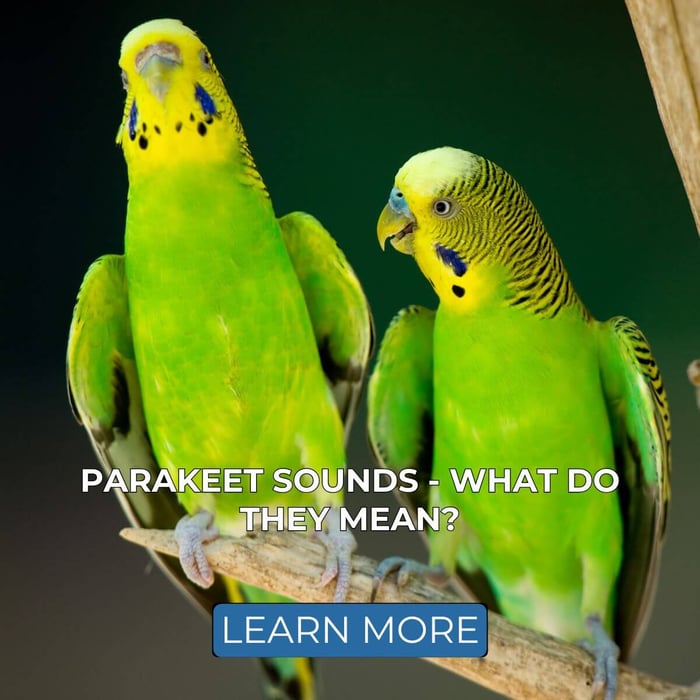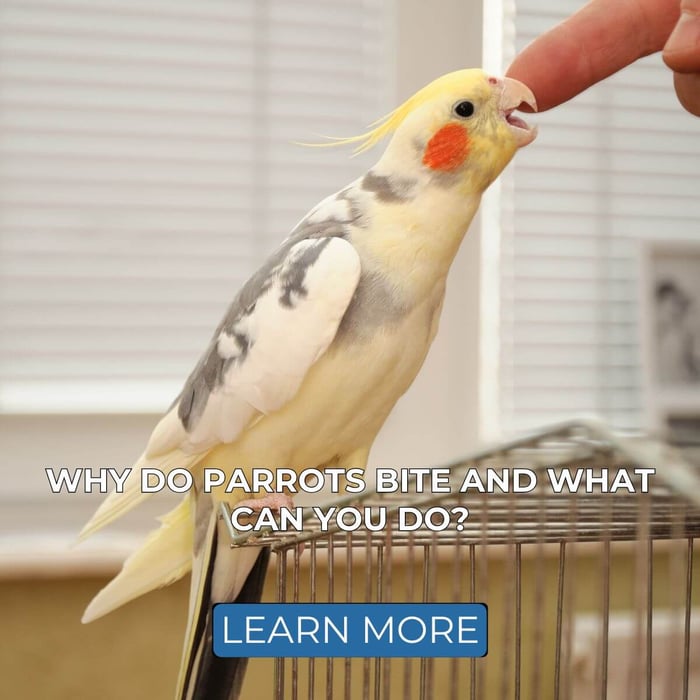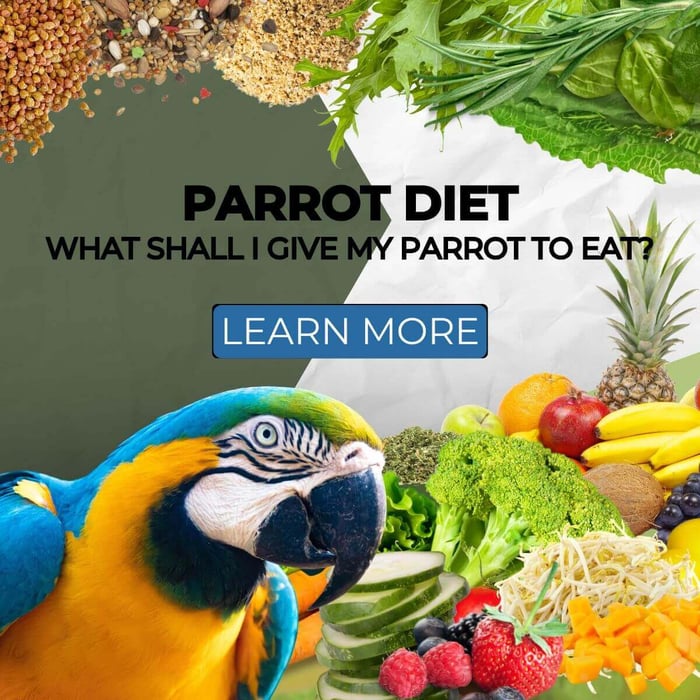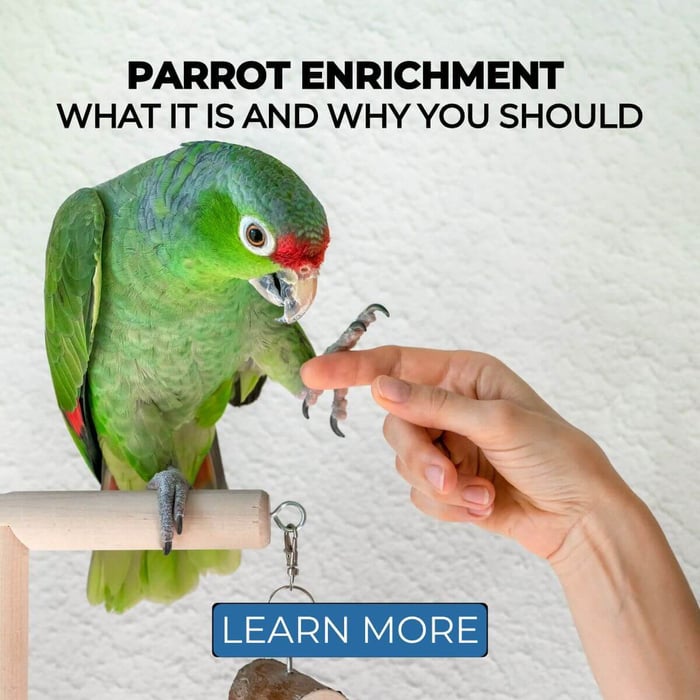What Does A Parrot Need? Parrot Necessities Checklist
Thinking of bringing a parrot home? Congratulations! Adding a pet to your family is always exciting! But… what does a parrot need? No worries, we'll help you make sure you've got everything in order before your feathered friend moves into its new forever home.
Keep reading for a list of everything a parrot needs: all the essentials, plus some handy extras!
1. Cage(S)

Most folks choose to house their parrot in a cage for at least part of the day (and even if you let your bird fly free all the time, it'll still need a small one for travel!). Keeping parrots in small cages is, unfortunately, still a popular practice, one that can cause these birds to pass away maturely due to obesity and stress.
So, what kind of cage should you go for? Well, there are two basic routes you can take:
- You buy a moderately sized cage and leave it open (almost) all day long. It serves as a dining area and bedroom for your parrot only. In this case, you'll likely have an out-of-cage playground nearby for your bird to hang out.
- You buy a large flight cage (as large as you can go, really!) or construct an aviary. Your parrot spends most of the time inside.
What kind of cage you go for thus depends on how much time your bird will spend inside. In general, though, a larger cage will almost always be better. Don't forget to also have a small travel cage on hand.
2. Toys
Toys, toys, toys! We can't emphasize it enough. A bare cage won't do for these birds: they need colour, movement and sound to keep them entertained.
A few types of toys you might want to keep in your bird's cage are:
- Activity toys: Often hung from the top of the cage, these are colourful and full of moving and jingling parts. You can find them made of naturally dyed wood and other materials, as well as acrylic and plastic.
- Climbing and swinging toys: A lot of these are somewhere between a toy and a perch. Colourful ladders, swings with bright beads and large sisal climbing nets are perfect for making moving around the cage fun.
- Foot toys: These are great for larger parrots, which like to hold loose toys using their feet. Foot toys should be small enough to hold but sturdy enough to chew.
- Foraging toys: These are meant to make feeding time fun and challenging, and they are a great way to make your parrot work for its food. Treats are hidden in small crevices or behind a mechanism.
- Preening toys: Parrots have strong preening and shredding instincts. To these birds, finding a new roll of paper or a pouch full of shredded cardboard in their cage is like hitting the motherlode!
All toys should be made from parrot-safe material, as these birds play using their beaks. Try to have a good number on hand and rotate them.
Tip: For large parrots that chew through some toys in a matter of hours, using toy-making parts to construct fun items yourself can be a more economical solution.
3. Perches
Unless it's flying around or sitting with you, your parrot will likely be sitting on a perch. It will be perched for hours in a row at night while sleeping. You can imagine that a variety of quality perches is an essential part of a homely parrot cage!
There is a lot to choose from. Try going for a combination of the following:
- Natural wood perches: This is obviously the most "realistic" option, which comes with its advantages. The texture of natural wood prevents foot sores or even deformities and helps keep the nails in shape. Additionally, most parrots love to use their wood perches as a chewing toy, which is great for beak maintenance and entertainment.
- Ladders: Great for both climbing and resting. Bonus points if it's colourful.
- Swings: Keep the leg muscles engaged while also providing entertainment. Many come with coloured beads and other fun extras.
- Flat perches: Provide some variety for the feet, again helping to prevent sores and deformities.
- Calcium perches: Multifunctional! These can be chewed if your parrot feels it needs calcium and also provide a place to relax.
4. Dishes & Bottles
Your parrot should have water available to drink at all times, preferably from multiple sources (both a dish and a bottle, for example). These need to be washed very regularly, so it's important to go for a material that allows easy cleaning.
Food dishes and bowls also get dirty quickly, so use a material that you can clean easily. If your flock consists of multiple birds, you'll probably need a long dish or multiple ones: parrots can get a bit territorial about their food. A high-quality plastic feeder with a comfy perch is a great option.
Lastly, don't forget a nice bathing dish or bowl. Most parrots love to splash around from time to time. A bath with a cover is probably a good idea, as water does tend to go flying during bath time!
5. What Does a Parrot Need - Extras
With the above, you've got the most important bits covered. However, there are some additional items that'll make life with a parrot significantly easier.
- Cleaning products: It's important to keep in mind that you can't use standard cleaning products around your bird, as these can damage their sensitive lungs. Vinegar and water only get you so far. Good thing parrot-safe cleaning products exist: these birds really don't tend to care where they fling their poop and food.
- Cage liner: For further ease of cleaning, using a paper cage liner roll can really help. No sand, please!
- Out-of-cage play area: Since your parrot will ideally be spending plenty of time outside of its cage, limiting the mess can be done by setting up an easy-to-clean play area. Add some fun toys, pop some paper on the bottom, and your parrot has the perfect "second home".
- First aid set: I can't stress it enough. Parrots are very curious beings that have an amazing propensity for getting themselves in trouble. A first aid kit containing items like blood-clotting agents, bandages, tweezers and an emergency solution to provide energy to a sick bird can really help in times of need.
Conclusion
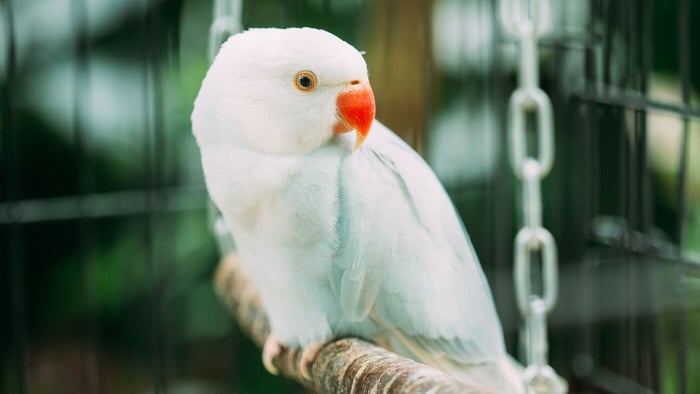
So, what does a parrot need? We hope this list of basic parrot necessities helps you in choosing the right items for your bird.
Don't forget to also have the right food ready for when your feathered friend comes home! It's important to inform yourself, so have a look at the guide to parrot diet for more information.

